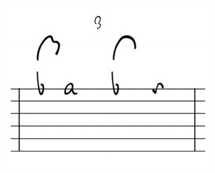ECOLM - An Electronic Corpus of Lute Music
Basic TabCode - rhythm signs
Tuplets - *Under Review*
Simple triplets appear in the following contexts in lute tablatures and in each case with or without an ‘enfolding’ slur (usually without, in fact):
- with an initial rhythm-sign and with a ‘3’ written above the midpoint of the group (usually over the second ‘chord’);
- as a) without the initial r-s;
- as a) without the ‘3’;
- as b) without the ‘3’ (i.e. without any indication).

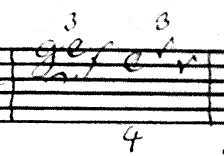
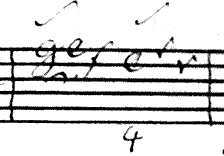
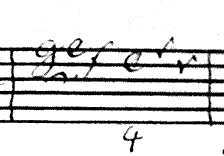
The actual triplet-ratio is never indicated explicitly in historical tablatures, but it is almost always obvious from the context. Obvious enough, that is, for this not to be a genuine ‘editorial decision’.
[While there are a few cases (only a few) where note-values *within a triplet group* are mixed (e.g. E SS E), larger tuplets with mixed note-values (e.g. the quintuplet EESSSSE) do not occur.]
With the following convention we can accommodate all these cases:
Before the first r-s of a tuplet group if the r-s is present (otherwise, in its place), always add an indication of the tuplet extent and note values thus:
n(xR),
where n is the number of tupletted note-values R in the group (e.g. ‘3’ for triplets; R would usually be ‘Q’ or ‘E’), and x is the number of note-values R to which the group is durationally equivalent. So " 3(2E) " indicates that this and the following two chords make a triplet quaver group occupying the time of two normal quavers; " 7(2E) " means a septuplet quaver group of the same overall duration.
If the assignment as a tuplet is editorial (i.e. there is no ‘3’, or other tuplet number), put n in square brackets.
In the case of simple triplets, like ‘3(2E)’ the ‘2’ or the ‘(2E)’ may be omitted altogether, being assumed by default (the ‘2’ cannot be present on its own, as this has undefined meaning); it is assumed that x = 2 if it is omitted.
Thereafter just proceed as normal: if there are rhythm-signs on chords, put them in, if not, leave them out.
So the following are OK:
3(2E)Ea1 b1 c1
(both the ‘3’ symbol and the first rhythm sign are present)
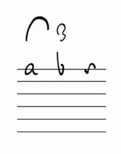
same as:
-
3Ea1 b1 c1
(’(2E)’ assumed by default) [3](2E)a1 b1 c1
(’3’ not present, but *must* be added editorially)

Ed1 e1 [3]a1 b1 c1
(’(2E)’ for triplet assumed by default)
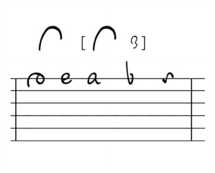
- Mixed note-value tuplets:
3Ea1 Sb1 c1 Ed1
(two semiquavers within the quaver tuplet; tuplet still in effect until final chord)
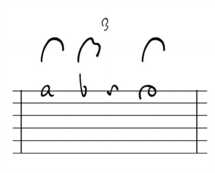
However, NB that if the shorter note values occur on the first chord of the triplet, R *must* be provided (though x may be omitted, as above). So:
- 6)"
3(E)Sb1 a1 Eb1 c1" is OK, but "3Sb1 a1 Eb1 c1" is not.
